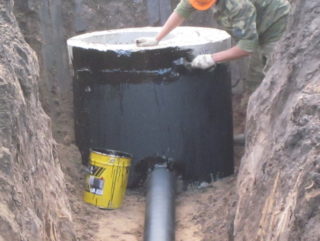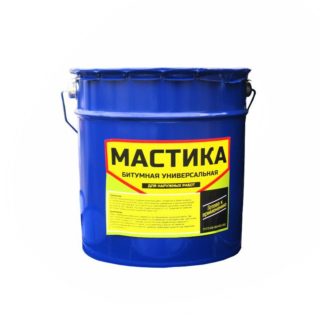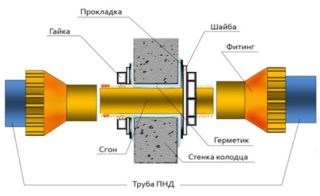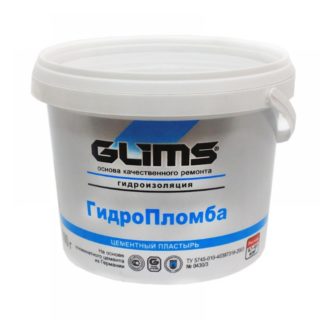Sealing of concrete rings for sewage is one of the main requirements for the construction of structures for collecting waste and sewage. The main task of concrete tanks is not to let contamination through the technological joints and not to infect the soil around the well, as well as groundwater.
Methods for waterproofing sewer wells

There are two main technologies that differ from each other in the types of joining of reinforced concrete rings. The latest manufacturers produce two types:
- with flat ends;
- chamfered ends in the form of a connecting lock.
The easiest way is to seal concrete rings of the second type. They are connected to each other by a lock. The upper part of the rings is an internal chamfer, the lower part is an external chamfer. When two rings are connected, the chamfers enter each other, forming a sealed joint. An additional material is placed between the elements of the lock connection, which, when compressed under the weight of the upper ring, flattens, filling the entire joint space.
Hemp or other fibers treated with technical oil are used as a sealing material. More and more often they try on a rubber band or a foamed polymer in the form of a cylinder of a small diameter. Reinforced concrete rings with a flat end are sealed in a different way. The joints must be covered both from the outside and from the inside.
Materials for sealing joints
Previously, the joints were covered with a cement-sand mixture, mixed with water. Such a putty did not last long, especially from the inside of the well, because the solution was exposed to active pressure from the side of the sewer. Therefore, a small amount of liquid glass was added to it.
Such a solution dries quickly, therefore it is recommended to pre-prepare the joint. The volume of the finished mixture should correspond to the speed of the operations carried out. You need an amount that can be used within 10-15 minutes. The material is applied with an ordinary spatula.
The deeper and wider the gap at the junction of the concrete rings, the thicker the sealant needs to be kneaded. And vice versa: the smaller the gap, the thinner the repair mass should be.
The second type of material that is used for sealing joints is hydraulic seals. These are self-expanding mixtures that, when hardened, form a strong substance. It will not crack for a long time. Hydro-seals are represented on the market by a large assortment from different manufacturers. The most popular are HydroStop, Peneplag, Waterplag and others.
The advantages of hydraulic seals include:
- resistance to temperature changes;
- neutrality to acids, salts and alkalis;
- long service life.
There is only one drawback - the high price. But even this does not stop the owners of autonomous sewer networks using prefabricated wells made of reinforced concrete rings. The high quality of the final result in this case justifies the construction costs.
Waterproofing of concrete wells

The concrete structure must be treated with protective materials in order to increase the waterproofing performance.Therefore, the concrete structure is waterproofed from the outside and from the inside.
For waterproofing sewer wells from the inside, only lubricants are used. The most popular is a mastic based on a bitumen-polymer mixture. It is a semi-liquid material that is applied to the inner surfaces of a concrete well with brushes and rollers. Material advantages:
- high strength of the applied layer;
- resistance to acids, alkalis and salts, household chemicals and other types of pollution;
- ease of application;
- low price;
- does not require careful preparation of surfaces.
The only requirement is to apply the mastic in two or three layers. In this case, each subsequent layer is applied after the previous one dries. It can take from 3 to 8 hours to dry, depending on the air temperature.
Bitumen-polymer mastics can be used to waterproof the outer planes of wells. But more often they use a combined option: they use mastic and roll or membrane protection. As the latter, roofing material or special membranes are laid on the rings, which are based on fiberglass, treated on both sides with a mixture of bitumen and polymer. Membrane material is many times better than roofing material.
Waterproofing rules
For the combined method of waterproofing, it is necessary to prepare a well: seal the joints between the rings, clean the surfaces of dust and dirt.
The sequence of the remaining operations:
- cover concrete rings for sewage, installed on top of each other, with mastic;
- while it has not dried up, rolls of waterproofing material are laid around the perimeter of the structure;
- laying is carried out from the bottom up so that the upper strips are superimposed on the lower ones with an overlap of 10-15 cm;
- another layer of mastic is applied on the laid roofing material;
- strips of waterproofing material are laid in the vertical direction, taking into account the overlap of its edges within 10-15 cm;
- another layer of mastic is applied;
- when it dries up, the soil is backfilled between the walls of the well and the walls of the pit.
The first layer of rolled waterproofing must be laid so that the joints of the strips do not hit the joints of the rings. This will provide a high degree of waterproofing.
Sealing the input

The inlet is the place where the sewer pipe enters the well made of reinforced concrete rings. For this, a hole is made in one of them, usually the upper one. It should be slightly larger than the diameter of the sewer pipe.
The main task is to insert the branch pipe into the well and fix it firmly so that it does not dangle in the hole. For this, a cement-sand mortar is usually used. In order for the latter to last longer and not crack during operation, a liquid plasticizer is added to its composition.
The second option is to fill the input with hot bitumen. Not the best way, because under the influence of temperature changes, bitumen cracks and flakes off. But this is the cheapest method. This technology is not taken into account in the SNiP requirements for the construction of trays in sewer wells.
The third option is to use a ready-made device: two steel discs with a hole inside, the diameter of which is slightly larger than the diameter of the sewer pipe. A sleeve is installed between the discs, into which pipes are pushed. First, a sleeve is inserted into the hole in the concrete ring. One disc is put on the pipe. Then it is pushed through the sleeve, then the second disc is put on. After that, both discs are pulled together with four bolts or studs.
No matter how reliable the input is in terms of sealing, it is exposed to the negative effects of groundwater. Therefore, it is recommended to make a drainage layer around the sewer pipe. This is a free-flowing material of different fractions. It is poured one by one, for example, first sand, then crushed stone, or first expanded clay, and then clay is laid.









